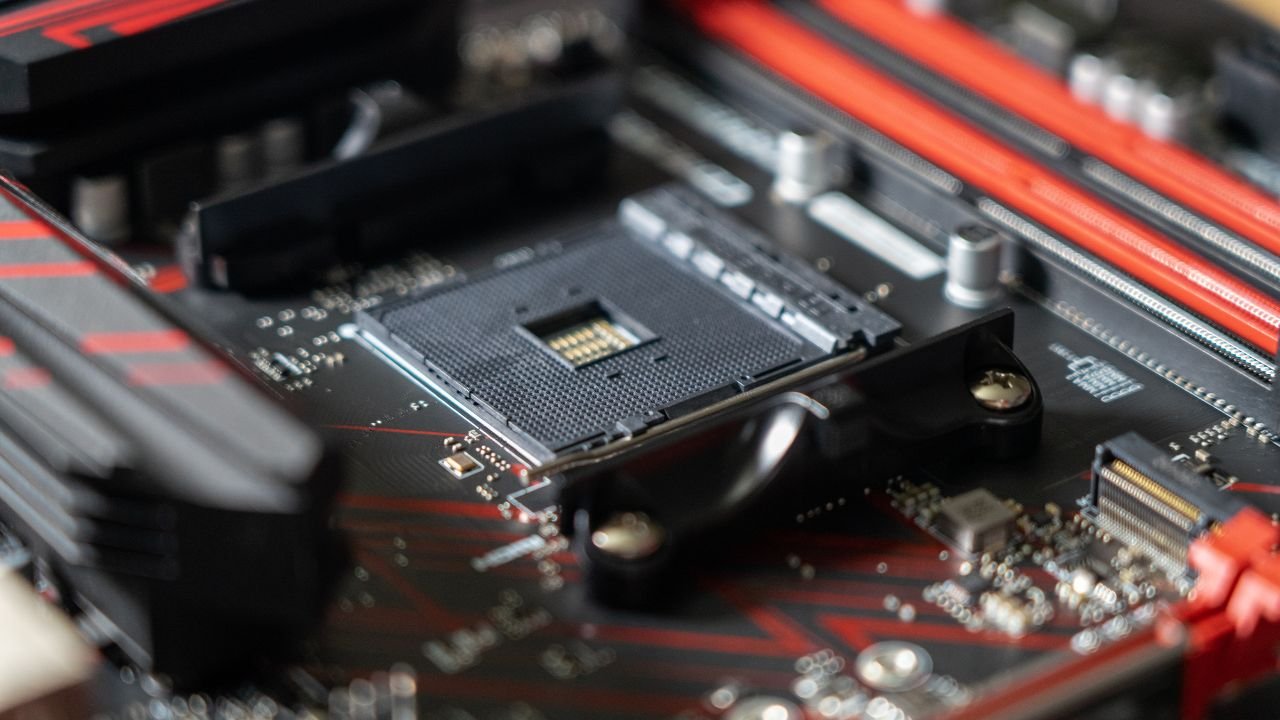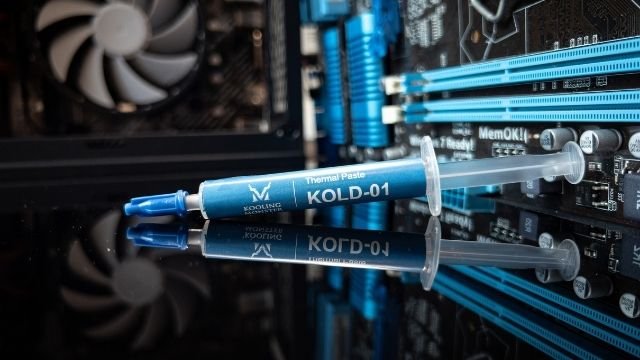Thermal Glue vs Thermal Paste: What Are The Differences?
When you’re building your PC it can be hard to weigh up your options with the huge variety of information available to you online. When it comes to keeping your system cool, thermal paste is by far the most effective choice, but why do you use thermal paste and why should you never get it mixed up with thermal glue?
What Are Thermal Paste and Thermal Glue?
Thermal paste and thermal glue are both great for heat transmission – but they work slightly differently, and this can be the difference between maintaining and destroying your hardware if you choose the wrong one.
Thermal Paste
A high-quality thermal paste is a liquid-like formula used to plug any imperfections and prevent air bubbles from forming between a CPU and a cooler or heatsink. Air bubbles and inefficient heat transferral can prevent the CPU from properly cooling and cause overheating, reduced PC performance and hardware damage, so it's vital to ensure effective heat transmission and avoid these issues.
Thermal pastes, like KOLD-01, are applied in thin layers using one of a number of application methods.
Thinner is always better when it comes to thermal paste as it allows for optimum heat transmission, less overspill and reduced waste. Higher quality pastes will have more liquidity and be easier to apply in thin, even layers. The buttered toast method typically is a good way of achieving an even spread that is thin enough to be effective.
Over time, the thermal paste you apply will dry, crack, and need to be replaced to maintain system performance. This is a standard part of maintaining your PC. You can buy easy-to-use thermal paste removal kits or try some DIY removal strategies to clean your CPU and make it ready for reapplication.
Here is a handy guide on how to clean the thermal paste from the CPU.
Thermal Glue
Thermal glue, also known as thermal adhesive also works to transfer heat within your system. The main difference is its sticky, adhesive qualities. Thermal glue is designed to stick two surfaces together as well as offer conductive qualities.
Thermal glue, like thermal paste, plugs the air gaps and discrepancies that prevent proper conductivity. This helps to regulate temperature and keep hardware running as is intended.
Although thermal glue will in theory perform the same function as thermal paste, it’s not recommended to use it between the heatsink and CPU because once it’s bonded it can be very difficult to separate. In fact, it can take quite a bit of force to separate the components if they are glued. In this scenario, heat from something like a hairdryer is one way to weaken the bond although it isn’t always effective.
Forced separation can cause significant damage to the CPU and be a costly error.
The thermal agent between your heatsink will need to be replaced as part of your PC maintenance, and being able to separate and remove the CPU is key to this maintenance, which is where thermal paste is the superior option.
Is Thermal Paste Sticky?
Thermal paste is not sticky like thermal glue because it doesn’t contain any adhesion so doesn’t run the same risk of being unable to separate your components. Thermal paste does not contain a curing agent and therefore won’t stick, it will just dry out.
Occasionally, you may find that a CPU and heatsink may appear to be stuck in cases where the thermal paste is dried and well overdue a change. You should be able to safely prise them apart without damage.
The exception to this rule is using a liquid metal-based thermal paste on an aluminium heatsink. It is extremely likely that the liquid metal in the paste will fuse the CPU and heatsink and make them extremely difficult to separate.
To avoid this, you should check what is in the thermal paste you choose, and look for high-quality pastes that will typically be longer-lasting and more spreadable.
Can I Use Thermal Adhesive On CPU and GPU?
We do not recommend using thermal adhesive on your CPU and GPU. The adhesive will bond your processor to your heatsink and will make it almost impossible to remove without damaging your hardware.
The heat conduit that you choose to use between your heatsink and CPU is not designed to be a one-time fix. Thermal pastes age, become dry and become less efficient.
You will need to remove your thermal paste and replace it anywhere from every couple of months to every couple of years, depending on how hard your system needs to work to regulate its temperature.
What Is Thermal Glue Used For?
So, what is thermal glue or thermal adhesive actually used for?
Although it's not a suitable direct alternative to thermal paste, thermal adhesive does have its uses. Most commonly thermal glue has industrial applications and is regularly used for electrics in vehicles. It can be found in many high-density circuits where temperature needs to be controlled and the components need to be secure.
Thermal glue is used in cases where a device gets hot, the temperature needs regulating, and the function is also dependent on the parts being secure. These are scenarios where adhesion and conductivity are important. Typically this would be a scenario where thermal paste and adhesive might be separately needed, but thermal glue offers a happy medium that can manage both of those functions.
Conclusion: Thermal Paste vs. Thermal Glue
In reality, thermal paste and thermal glue are really very different and serve different purposes.
When it comes to your next PC build, thermal paste is by far the winner of this battle. It will keep your PC temperature under control and it is easy to remove and reapply when it’s time to look at maintenance.
You can get your hands on some high-quality thermal paste right here, and check out our guide on how to apply it!




